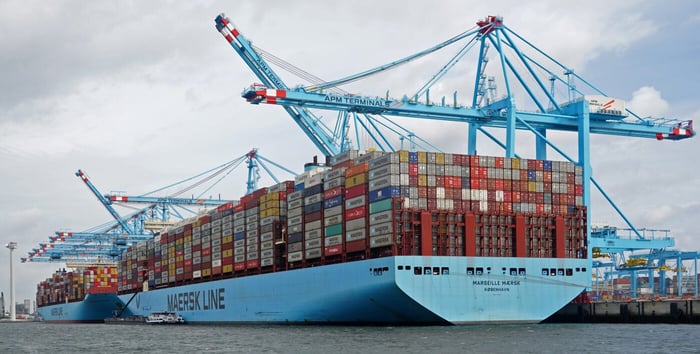The Red Sea, a historically crucial maritime route connecting the Mediterranean Sea to the Indian Ocean, has become the focal point of global attention due to a convergence of geopolitical, security, and environmental challenges. While these challenges are significant, the disruptions to shipping rates and global trade are not as severe as those experienced during the COVID-19 pandemic. In this comprehensive exploration, we will delve into the multifaceted issues plaguing the Red Sea and analyze their nuanced effects on the complex tapestry of international trade, contrasting them with the unparalleled disruptions caused by the pandemic. For homeowners considering new flooring options, understanding the global trade landscape is essential as it indirectly impacts the availability and pricing of materials.
Geopolitical Tensions:
At the heart of the Red Sea's challenges lie the ongoing geopolitical tensions in the region. Conflicts in Yemen and the Horn of Africa have created an environment of uncertainty, with nations competing for control over key ports and maritime territories. The Bab el Mandeb and the Strait of Hormuz, two critical chokepoints in the Red Sea, are particularly vulnerable to disruptions that could impact the flow of goods and energy supplies worldwide.
These geopolitical tensions have implications for global trade, affecting not only large-scale industries but also the supply chains for home improvement materials. Homeowners looking to undertake projects such as installing new flooring may find that geopolitical uncertainties can influence the availability and pricing of certain materials.
Security Concerns:
Piracy and maritime security issues have added another layer of complexity to navigating the Red Sea. The increase in pirate attacks and armed robberies poses a threat to commercial shipping, leading to rising insurance costs and potential delays in maritime transportation. Efforts to combat piracy have been ongoing, with naval patrols and international cooperation playing a crucial role in deterring attacks.
While maritime security concerns are substantial, the impact on homeowners is more indirect. Increased security measures may contribute to overall shipping costs, potentially influencing the prices of imported flooring materials. However, these effects are likely to be less pronounced than the disruptions witnessed during the pandemic, where lockdowns and global supply chain interruptions significantly impacted the availability and pricing of various goods.
Environmental Impact:
The Red Sea also grapples with environmental challenges, including coral bleaching, pollution, and overfishing. The degradation of the marine ecosystem not only jeopardizes the livelihoods of local communities but can also disrupt shipping routes and increase operational costs for the shipping industry.
For homeowners, understanding the environmental challenges in the Red Sea holds relevance in the context of sustainability. As the world becomes more conscious of eco-friendly practices, homeowners may seek flooring materials that adhere to environmental standards. Awareness of the Red Sea's ecological concerns can influence consumer choices toward sustainable and responsibly sourced flooring options.
Impact on Global Trade and Homeowners:
The disruptions in the Red Sea have far-reaching consequences for global trade, but they do not mirror the unprecedented disruptions brought about by the COVID-19 pandemic. The relative stability and adaptability of the shipping industry in the face of regional challenges highlight the resilience of the global supply chain.
For homeowners, this resilience means that while there may be some fluctuations in the availability and pricing of flooring materials due to Red Sea-related challenges, it is unlikely to reach the levels of uncertainty witnessed during the pandemic. Home improvement projects, including flooring upgrades, can proceed with a degree of confidence that the supply chain disruptions experienced in recent years are less likely to repeat on the same scale.
Moreover, the aftermath of the pandemic has reshaped global trade dynamics. Supply chain resilience and diversification have become priorities for businesses and governments alike. The lessons learned from the disruptions caused by the pandemic have prompted a reevaluation of trade strategies, with an emphasis on building more robust and adaptable supply chains.
Conclusion:
In conclusion, the challenges facing the Red Sea are undoubtedly significant, encompassing geopolitical tensions, security concerns, and environmental issues. However, the impact on shipping rates and global trade is not as drastic as the disruptions caused by the COVID-19 pandemic. For homeowners in the midst of home improvement projects, including flooring upgrades, the relative stability and adaptability of the global supply chain offer a more predictable landscape for material availability and pricing.
As the world continues to navigate these challenges, it is crucial to monitor developments in the Red Sea and respond with collaborative and targeted solutions. While the effects on global trade may be less immediate, the interconnected nature of the international economy means that any disruptions in key maritime routes reverberate globally. Striking a balance between addressing regional challenges and maintaining the smooth flow of international trade remains paramount for sustaining economic growth and stability in the years to come. The post-pandemic world demands a strategic and adaptable approach to global trade, with an awareness of both regional challenges and broader systemic resilience.
For homeowners, staying informed about these dynamics can guide choices toward sustainable and readily available flooring options. As we closely monitor these events, our team continues to offer best in class service and transparency throughout your customer journey, including shipping details and when best to order your flooring to avoid any potential project delays.









